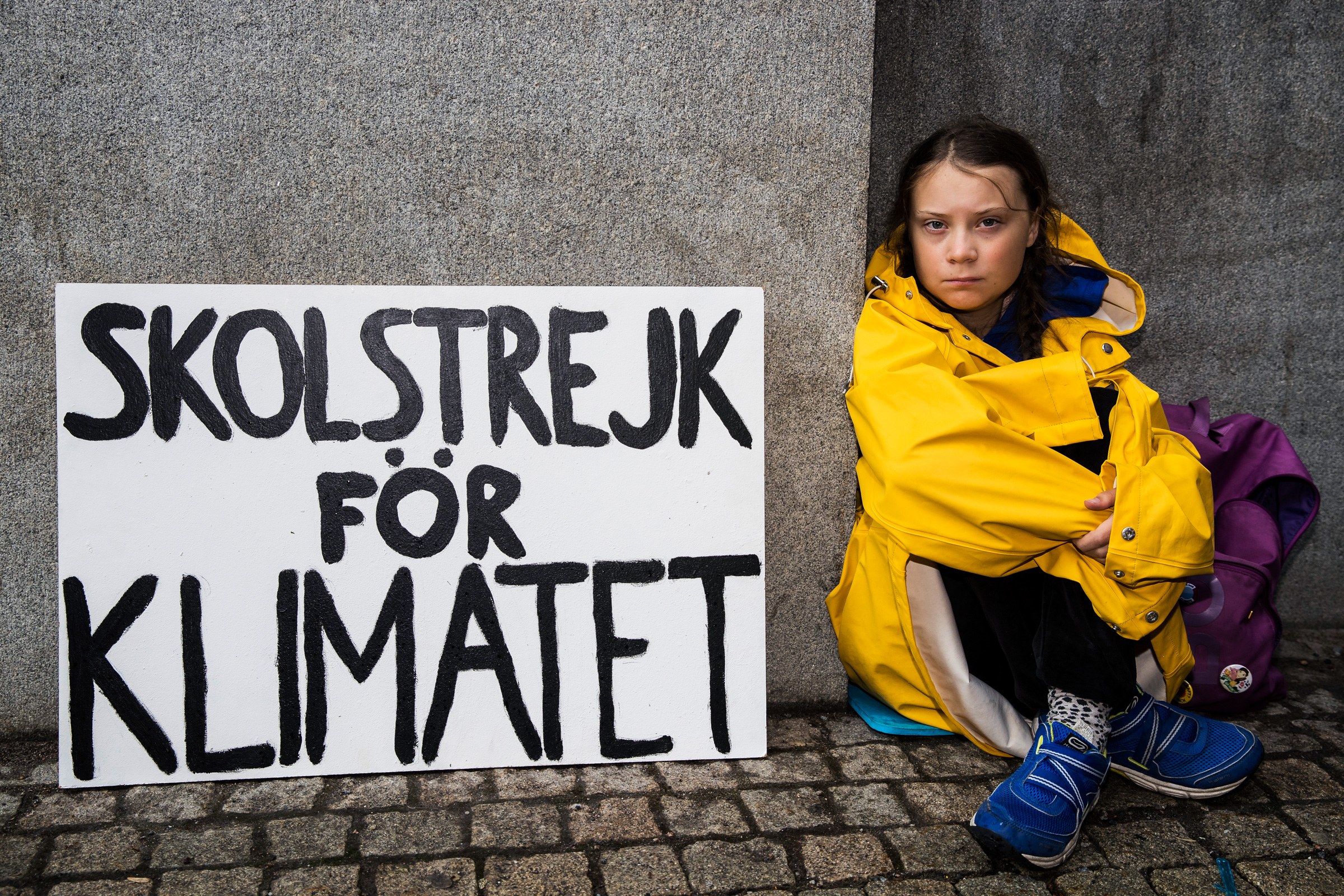Greta Thunberg pictured outside the Swedish parliament last August / Photo: Michael Campanella/Getty.
Tomorrow, Swedish teen Greta Thunberg will be taking up her now weekly spot outside the country’s parliament. The now 16-year old has been occupying the same space almost every Friday since last August, where she has been protesting against the world’s inaction on climate change. And from a lone figure with a hand-painted banner, the unassuming Thunberg has now become the figurehead for a vast and growing movement, inspiring thousands of young people around the world into taking positive action, and receiving a nomination for this year's Nobel Peace Prize.
It was aged just eight when Thunberg first learned about climate change, and she was shocked that adults did not appear to be taking the issue seriously. “In school, teachers showed us films of plastic in the ocean, starving polar bears and so on,” she told The Guardian’s Jonathan Watts. “I cried through all the movies. Those pictures were stuck in my head.” At first, it was a source of debilitating depression for Thunberg, who as an Asperger’s sufferer is aware that she tends to overthink things. But it eventually became a motivating force for good, and after successfully persuading her parents of the arguments for action over the ensuing years, she was sure she could make a difference.
Students from over 120 countries took part in the Thunberg-inspired Global Climate Strike / Photo: schoolstrike4climate.
Inspired by students from the Parkland school in Florida, who walked out of classes in protest against the US gun laws that enabled the massacre on their campus, Thunberg vowed to strike every Friday outside the Swedish parliament until the government’s policies are in line with the Paris climate agreement. And her action has since been mirrored around the world, with schoolchildren in countries including Germany, Belgium, the UK, France, Australia and Japan staging regular walkouts as part of her #FridaysforFuture movement.
As Watts writes, she has been described by both veteran campaigners and esteemed scientists as the best news for the climate movement in decades, not only calling out the greenwashing, inaction and inconsistencies of the powers that be from the sidelines, but confronting them head on. Invited to attend the United Nations Climate Change Conference in December, where she met with the Secretary General of the UN, Antonio Guterres, she told the delegates, “You say that you love your children above all else, and yet you are stealing their future in front of their very eyes,” and in January, at the World Economic Forum in Davos, she admonished the executives in her typically plain-speaking tone, saying in her speech, “I don’t want you to be hopeful, I want you to panic. I want you to feel the fear I feel every day. And then I want you to act.”
But it was last month when her transition from local activist to global phenomenon was assured, with students from every continent taking part in the first Global Climate Strike. Inspired by Thurnberg’s weekly protest, the global strike was supported in over 120 countries, where governments were urged to aggressively cut their greenhouse gas emissions.
Scientists have warned that the impacts of climate change, such as extreme weather, are already having deadly and damaging consequences, and that we have just 12 years to limit devastating worldwide warming. For her part, Thunberg has successfully pressured European Commission President Jean-Claude Juncker to commit to spending 1 trillion Euros to mitigate climate change between 2021 and 2027. However, true to her word, she is continuing her weekly strike until the Swedish parliament strengthens its own climate commitments.
Here’s Thunberg delivering her momentous speech at Davos…
Home Page Image: Getty.













